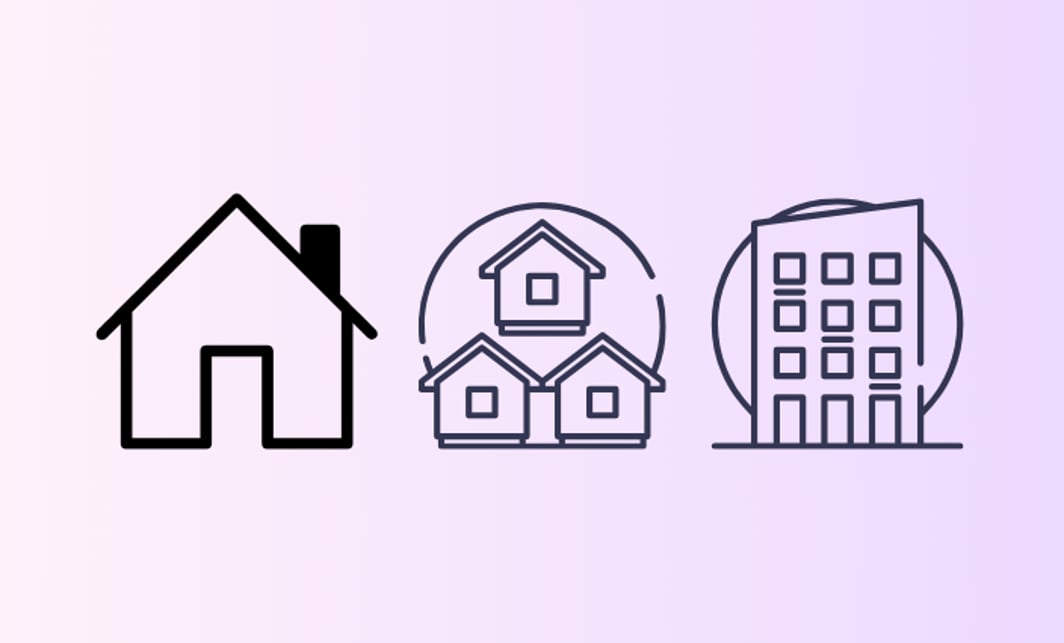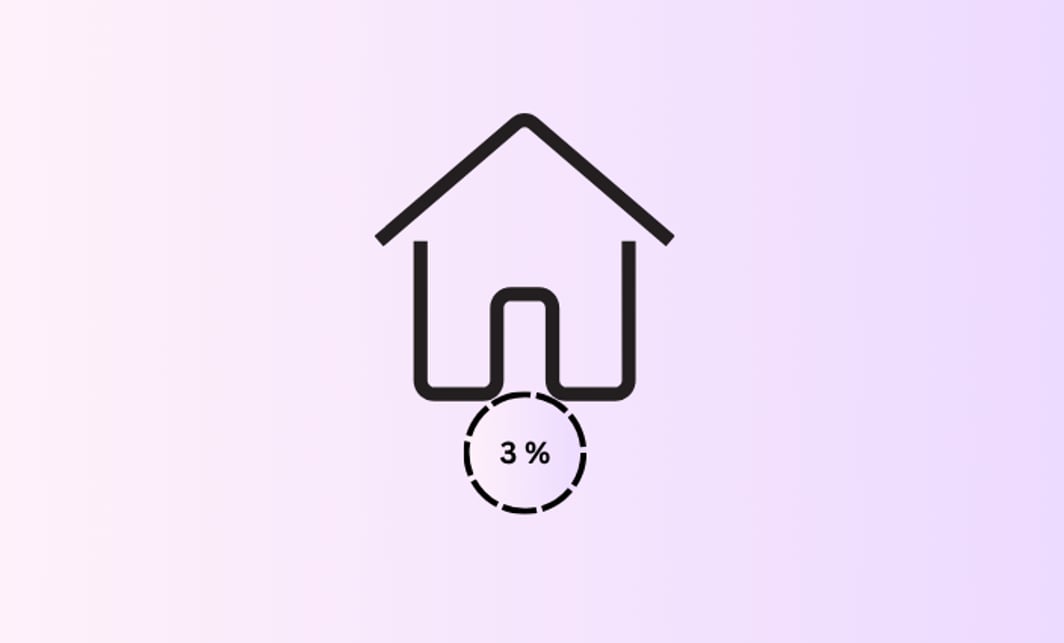Introduction to property types for First Home Buyers
Current demand and preferences
For first home buyers in Australia, choosing the right property type is a critical decision shaped by affordability, government support, and lifestyle preferences. Currently, newly built houses and townhouses dominate demand among first-time buyers, driven largely by government incentives and the availability of these property types. The Australian Government’s Home Guarantee Scheme (HGS) has facilitated access to homeownership for over 58,000 eligible buyers, emphasising affordable housing delivery predominantly targeting houses and townhouses. Apartments, while present in the market, generally attract fewer first home buyers, partly due to fluctuating rental prices and less government focus on this segment for new homebuyer incentives.
Supply constraints have intensified affordability challenges. In 2024, Australia's new housing supply dropped to one of the lowest levels in a decade, with only about 177,000 dwellings completed nationally. Coupled with rising mortgage interest rates—averaging an increase of 125 basis points in 2023—this shortage has pushed average owner-occupier mortgages to approximately $624,000, placing significant financial pressure on first home buyers. Policies like the abolition of stamp duty on new homes in Queensland from May 2025 aim to stimulate demand further in the house and townhouse market, reinforcing their appeal.
Regional and Urban variations in preferences
First home buyers’ property preferences vary regionally, heavily influenced by proximity to public transportation and urban amenities. Urban areas with well-developed infrastructure and access to services see higher demand for apartments and townhouses that offer convenience and reduced commuting times. Conversely, regional buyers often prefer houses due to availability and affordability, with government schemes allocating specific quotas (e.g., 10,000 places reserved for regional buyers under the HGS).
Urban planning trends increasingly promote mobility hubs, integrating housing with transport and active travel options, enhancing the attractiveness of medium to high-density housing like townhouses and apartments. However, intense competition in popular urban areas means many first home buyers miss out on properties, underscoring the need to balance preferences with practical availability and budget constraints.
Financial considerations and total cost of ownership
Mortgage, Taxes, and Fees across property types
Understanding the total cost of ownership is essential for first home buyers. This includes mortgage repayments, stamp duty, legal fees, and other transaction costs, which vary significantly by property type.
- Houses generally have higher purchase prices, leading to larger mortgage amounts and consequently higher interest payments. However, they usually avoid strata or body corporate fees.
- Townhouses offer a middle ground, often priced between houses and apartments, with moderate mortgage sizes and some strata fees.
- Apartments tend to have lower purchase prices and thus smaller mortgages, but strata fees can be substantial.
For example, the average mortgage loan nationally was about $641,000 in mid-2024, with mortgage interest rates hovering around 6.5% after recent rate hikes. Stamp duty varies by state and property value but can add thousands upfront; some states like Queensland are moving to abolish stamp duty on new homes to ease entry costs.
Maintenance costs and strata fees
Ongoing expenses play a crucial role in affordability:
- Detached houses require individual maintenance for the entire property, including gardens and external structures, which can be irregular but potentially costly.
- Townhouses and apartments typically incur strata or body corporate fees to cover maintenance of common areas, insurance, and utilities. Recent data shows strata fees have surged, with apartment owners facing 15-20% average increases and some experiencing hikes up to 45% due to rising utility and insurance costs. Special levies for major repairs can also arise unexpectedly, adding financial risk.
These fees can reduce borrowing capacity and monthly cash flow, making it critical for first home buyers to scrutinise strata costs and financial health of the building’s management body.
Government incentives and support schemes
Australia offers a variety of government grants and incentives to support first home buyers, which often differ by property type and location:
- The Home Guarantee Scheme (HGS) enables buyers to purchase with as little as 5% deposit without needing lenders mortgage insurance, focusing heavily on new houses and townhouses.
- The Activation Fund removes restrictions on renting out rooms, providing extra income opportunities.
- State-level grants, stamp duty concessions, and regional guarantees target affordability, with some initiatives specifically promoting new builds to stimulate supply.
First home buyers are advised to investigate eligibility for these schemes early in the buying process, as they can significantly reduce upfront and ongoing costs.
Investment potential and market trends
Resale values and rental yields
Market data confirms that houses and townhouses maintain stronger resale values and rental yields compared to apartments, driven by supply constraints and government rental initiatives. Limited availability of townhouses and houses supports price stability or growth, making them attractive for first home buyers who consider long-term investment potential.
Recent reforms like Build to Rent aim to increase rental housing supply, which may moderate yields over time but are unlikely to drastically alter market dynamics in the short to medium term. Apartments, while offering lower entry prices, often yield lower rental returns and may experience greater price volatility.
Impact of infrastructure and zoning changes
Infrastructure investments totalling over $213 billion through 2027 promise to enhance connectivity and urban development, particularly benefiting well-serviced suburbs. Zoning reforms increasingly encourage medium-density housing, such as townhouses, to alleviate supply shortages and improve affordability.
However, while these developments enhance property appreciation potential, affordability pressures remain acute due to insufficient supply. First home buyers should target areas earmarked for infrastructure upgrades and rezoning to maximize future value gains, balancing immediate affordability with long-term growth prospects.
Environmental and sustainability factors
Energy efficiency and environmental impact of property types
From an environmental viewpoint, property types differ in energy use and carbon footprint:
- Apartments and townhouses tend to have lower energy consumption and carbon emissions due to shared walls, smaller footprints, and often more efficient construction standards.
- Detached houses typically consume more energy for heating, cooling, and maintenance.
Construction materials like steel, concrete, and bricks contribute significantly to embodied carbon, especially in detached homes with larger size and land use.
Building codes and government incentives for sustainable construction
Australia’s building codes increasingly enforce energy efficiency and low-carbon construction practices, guided by frameworks such as the National Australian Built Environment Rating System (NABERS) and Green Building Council of Australia (GBCA) standards. Financial incentives, including grants and favourable loan terms, support first home buyers opting for sustainable builds.
Long-term environmental benefits and cost savings
Sustainably certified apartments and townhouses offer measurable energy cost savings and lower fuel poverty risk compared to traditional detached homes. Shared infrastructure and optimised management further reduce operating costs, benefiting first home buyers financially and environmentally over the long term.
Environmental and cost-of-living impacts near sustainable transport
Locating properties near sustainable transport options reduces residents’ carbon footprints and transportation costs. Apartments and townhouses in such locations promote walkability and reduce car dependency, aligning with urban planning goals to create compact, low-impact communities.
Social and community implications
Neighbourhood density and community feel
Property type directly influences neighbourhood density and social fabric:
- Detached houses create low-density, often car-dependent neighbourhoods with fewer opportunities for spontaneous social interaction.
- Townhouses and apartments foster higher density, walkability, and greater social cohesion through shared public spaces and proximity to amenities.
Urban areas with mixed housing types support diverse and adaptable communities, allowing residents to remain socially connected through life changes.
Social interaction and mental health
Higher-density living can promote social engagement and mental well-being by facilitating community participation. However, design quality and availability of communal spaces are critical. Poorly managed high-density housing may lead to social isolation or stress.
First home buyers should consider how property type and neighbourhood design align with their social needs and lifestyle preferences.
Cultural diversity and community participation
Property types that encourage communal spaces and accessibility support engagement for first home buyers from diverse cultural backgrounds. Stable homeownership fosters social capital and cultural continuity, particularly important for minority and Indigenous communities.
Policies promoting inclusive housing choices enhance opportunities for diverse first home buyers to integrate and participate fully in their communities.
Summary
Balancing affordability, sustainability, and community
Choosing the best property type requires balancing financial affordability, environmental sustainability, and social community aspects.
- Houses offer space and privacy but come with higher upfront and maintenance costs and environmental impacts.
- Townhouses provide a compromise with moderate costs, better sustainability, and community integration.
- Apartments often have lower entry prices and energy costs but can incur significant strata fees and may offer less privacy.
Strategic approaches to property choice
First home buyers should:
- Assess total cost of ownership, including mortgage, fees, taxes, maintenance, and strata levies.
- Investigate government incentives to maximise financial support.
- Prioritise properties near infrastructure developments and public transport to enhance long-term value and reduce living costs.
- Consider environmental factors, opting for energy-efficient and sustainably certified homes to lower future expenses.
- Reflect on community and social needs, choosing neighbourhoods that foster connection and well-being.
An informed, holistic approach combining market trends, financial planning, sustainability, and social considerations will optimise the home buying experience and outcomes for first home buyers.




